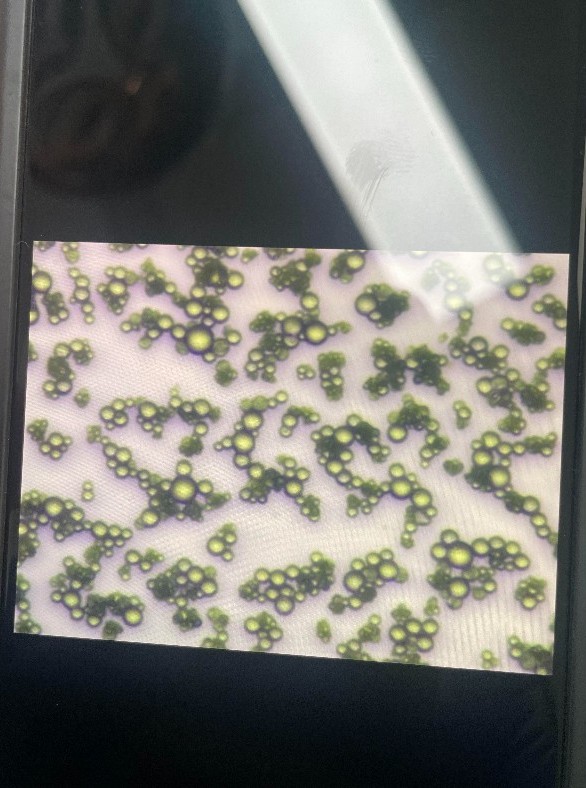
Post-harvest disease prevention
Post-Harvest Disease Prevention: The Key to Protecting Agricultural Product Yield and Quality
After each harvest, farmers often face great risks from diseases arising during the process of preserving and transporting agricultural products. Harmful agents such as bacteria, molds and pests not only reduce the quality of agricultural products but also cause serious economic losses. Post-harvest disease prevention not only helps protect the fruits of labor but also ensures safe food quality, meeting market demand.
This article will provide comprehensive information on post-harvest disease prevention measures, helping farmers optimize the value and productivity of agricultural products.
1. Why is Post-Harvest Disease Prevention Important?

- Reduce economic losses: Every year, millions of tons of agricultural products around the world are lost due to post-harvest diseases. Good disease control helps farmers minimize economic losses.
- Protecting the quality of agricultural products: Diseases can damage the texture, taste, and nutritional value of products. Disease prevention helps maintain the quality of agricultural products from harvest to consumption.
- Meeting export standards: International markets often have strict requirements on the quality and hygiene of agricultural products. Disease control is a prerequisite for agricultural products to meet export standards.
2. Causes of Post-Harvest Diseases

2.1. Molds
- Molds such as Aspergillus, Penicillium, and Fusarium often thrive in conditions of high humidity and warm temperatures.
- Consequences: Molds not only damage agricultural products but also produce dangerous toxins such as aflatoxin, which are harmful to human health.
2.2. Bacteria
- Bacteria such as Salmonella, E. coli, and Listeria can enter agricultural products during harvesting, handling, or storage.
- Consequences: Causes food poisoning and reduces the shelf life of agricultural products.
2.3. Pests
- Post-harvest pests, such as rice weevils or beetles, often damage cereals, seeds and fruits in storage.
- Consequences: Reduces the volume and value of products, causing great economic losses.
3. Post-Harvest Disease Prevention Measures

3.1. Post-Harvest Handling of Agricultural Products
- Product cleaning: Remove soil, dirt and plant residues to reduce the risk of contamination from pathogens.
- Drying or drying: For products such as grains and seeds, drying to a moisture level below 13% helps prevent mold growth.
- Chemical treatment: Use safe compounds such as sorbic acid or natural preservatives to extend storage time.
3.2. Agricultural Product Preservation
- Standard storage warehouse:
- Ensure the warehouse is always dry, cool, and away from direct sunlight.
- Use ventilation systems to control humidity and temperature.
- Use modern storage technology:
- Cold storage: Lowering the temperature helps slow down the growth of bacteria and mold.
- Use controlled atmosphere (CA): Adjust the concentration of oxygen and carbon dioxide in the warehouse to inhibit the growth of pathogens.
- Periodic warehouse treatment:
- Spray insecticide and disinfect the warehouse before putting agricultural products into storage.
- Check the warehouse regularly to detect and promptly handle signs of infection.
3.3. Control the Transportation Process
- Proper packaging:
- Use breathable, moisture-proof packaging suitable for each type of product.
- Avoid crushing agricultural products during the packaging process.
- Transport under standard conditions:
- Use refrigerated trucks or temperature-controlled vehicles for perishable products.
- Limit transportation time to reduce the risk of mold and bacteria growth.
3.4. Use High Technology
- IoT in storage monitoring: IoT sensors help monitor humidity, temperature and air quality in real time, helping to detect problems early.
- Machine Learning: Apply AI to predict disease risks based on data on storage conditions and types of agricultural products.
- Ozone application: Ozone technology helps disinfect, remove bacteria and mold on the surface of agricultural products.
4. Tips for Preventing Post-Harvest Diseases

- Choose the right harvest time: Harvest when the product reaches optimal maturity, avoid harvesting in humid conditions.
- Train workers: Ensure that those involved in the harvesting and handling of agricultural products are equipped with knowledge of hygiene and disease prevention.
- Use disease-resistant varieties: Disease-resistant varieties not only reduce risks during cultivation but also help preserve crops better after harvest.
- Collaborate with experts: Consult with agricultural experts to optimize storage and transportation processes.
5. The Future of Post-Harvest Disease Prevention

- Apply high technology: In the future, technologies such as blockchain can be used to track the entire agricultural supply chain, ensuring quality from harvest to consumer.
- Develop natural preservatives: Research safe, environmentally friendly preservatives to replace traditional chemicals.
- Sustainable agriculture: Build environmentally friendly production and preservation models of agricultural products, minimizing the impact of post-harvest diseases.
Conclusion
Post-harvest disease prevention is an important step to protect the productivity, quality of agricultural products and increase economic value. With modern scientific and technological measures, farmers can minimize losses and create products that meet market demand. This is not only an individual task but also a community responsibility in building a sustainable and effective agriculture.
Bình luận
Những bình luận mới nhất



